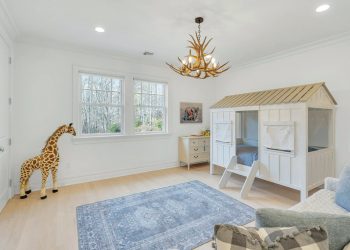 As Millennials begin to enter the home buying market in larger numbers, homes will get a little smaller, laundry rooms will be essential, and home technology will become increasingly prevalent, says panelists during an International Builders’ Show press conference on home trends and Millennials’ home preferences held last week.
As Millennials begin to enter the home buying market in larger numbers, homes will get a little smaller, laundry rooms will be essential, and home technology will become increasingly prevalent, says panelists during an International Builders’ Show press conference on home trends and Millennials’ home preferences held last week.
NAHB Assistant Vice President of Research Rose Quint predicted that the growing numbers of first-time buyers will drive down home size in 2015. Three million new jobs were created in 2014, 700,000 more than the previous year “and the most since 1999,” Quint says. At the same time, regulators have reduced downpayment requirements for first-time buyers from 5 percent to 3 percent and home prices have seen only moderate growth.
“All these events lead me to believe that more people will come into the market, and as younger, first-time buyers, they will demand smaller, more affordable homes,” Quint says. “Builders will build whatever demand calls out for.”
Quint also unveiled the results of two surveys: one asking home builders what features they are most likely to include in a typical new home this year, and one asking Millennials what features are most likely to affect their home buying decisions.
Of the Top 10 features mentioned by home builders, four have to do with energy efficiency: Low-E windows, Energy Star-rated appliances and windows and programmable thermostats. The top features: a master bedroom walk-in closet and a separate laundry room.
Least likely features include high-end outdoor kitchens with plumbing and appliances and two-story foyers and family rooms. “Consumers don’t like them anymore, so builders aren’t going to build them,” Quint says.
When NAHB asked Millennials what features fill their “most-wanted” shopping list, a separate laundry room clearly topped the list, with 55 percent responding that they just wouldn’t buy a new home that didn’t have one. Storage is also important, with linen closets, a walk-in pantry and garage storage making the Top 10 – along with Energy Star certifications. In fact, this group is willing to pay 2-3 percent more for energy efficiency as long as they can see a return on their power bills.
If they can’t quite afford that first home, respondents says they’d be happy to sacrifice extra finished space or drive a little farther to work, shops and schools, but are unwilling to compromise with less expensive materials.
A whopping 75 percent of this generation wants to live in single-family homes, and 66 percent of them prefer to live in the suburbs. Only 10 percent say they want to stay in the central city. Compared to older generations, millennials are more likely to want to live downtown, but it’s still a small minority share, Quint says.
Panelist Jill Waage, editorial director for home content at Better Homes and Gardens, discussed Millennials’ emphasis on the importance of outdoor living and that generation’s seamless use of technology, and how those two trends play into their home buying and home renovation decisions.
Because they generally don’t have as much ready cash–or free time–as older home owners, Millennials seek less expensive, low-maintenance choices like a brightly painted front door, strings of garden lights, and landscaping that needs less watering and mowing, like succulent plants and larger patios.
They’re also very comfortable with their smartphones and tablets, and increasingly seek ways to control their heating and air-conditioning and security and lighting as well as electronics like televisions and sound systems from their phones. “They want to use their brains for other things, not for remembering whether they adjusted the heat or closed the garage door,” Waage says.
For more information, visit www.nahb.org.











